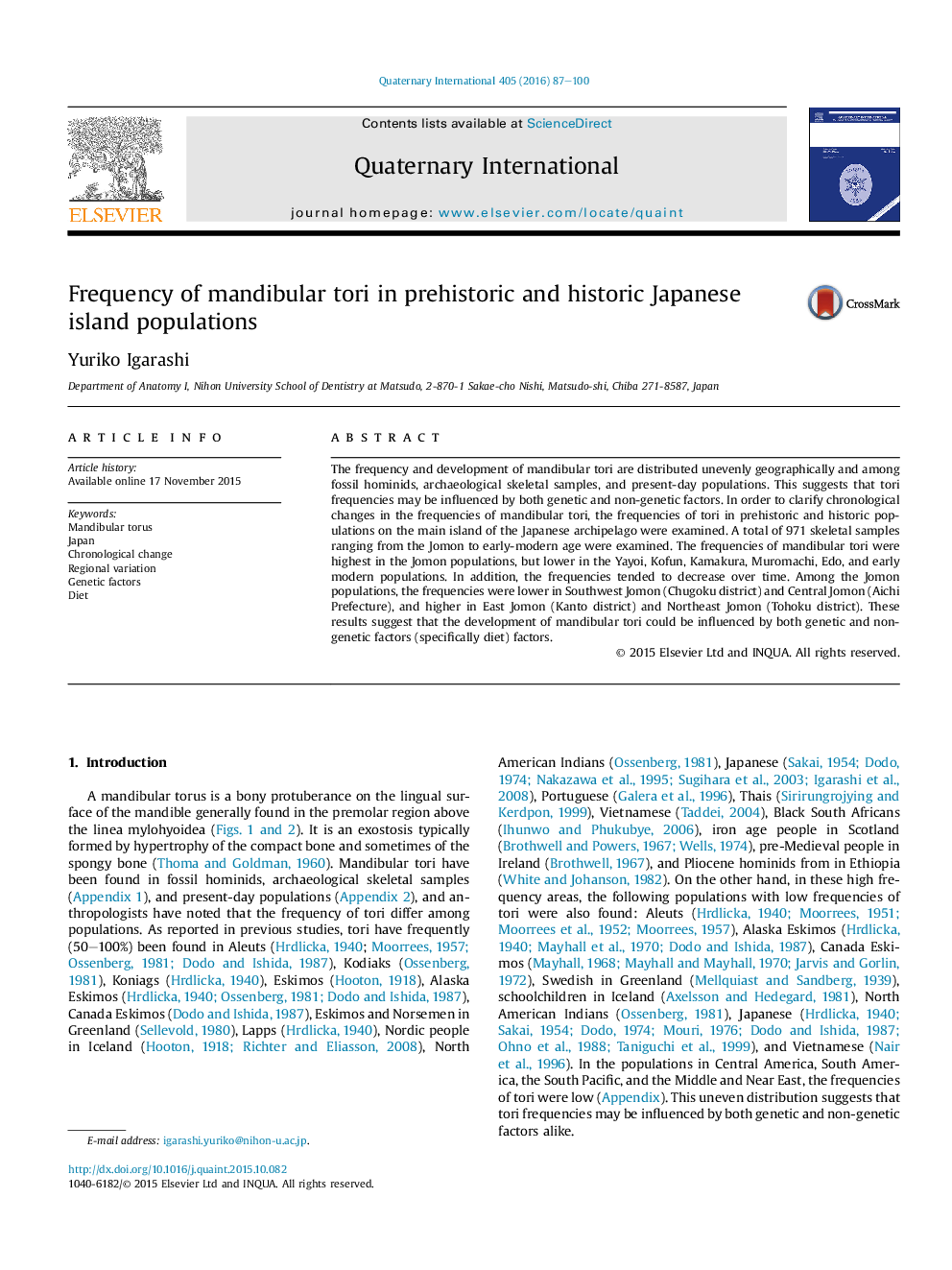| Article ID | Journal | Published Year | Pages | File Type |
|---|---|---|---|---|
| 10500885 | Quaternary International | 2016 | 14 Pages |
Abstract
The frequency and development of mandibular tori are distributed unevenly geographically and among fossil hominids, archaeological skeletal samples, and present-day populations. This suggests that tori frequencies may be influenced by both genetic and non-genetic factors. In order to clarify chronological changes in the frequencies of mandibular tori, the frequencies of tori in prehistoric and historic populations on the main island of the Japanese archipelago were examined. A total of 971 skeletal samples ranging from the Jomon to early-modern age were examined. The frequencies of mandibular tori were highest in the Jomon populations, but lower in the Yayoi, Kofun, Kamakura, Muromachi, Edo, and early modern populations. In addition, the frequencies tended to decrease over time. Among the Jomon populations, the frequencies were lower in Southwest Jomon (Chugoku district) and Central Jomon (Aichi Prefecture), and higher in East Jomon (Kanto district) and Northeast Jomon (Tohoku district). These results suggest that the development of mandibular tori could be influenced by both genetic and non-genetic factors (specifically diet) factors.
Related Topics
Physical Sciences and Engineering
Earth and Planetary Sciences
Geology
Authors
Yuriko Igarashi,
